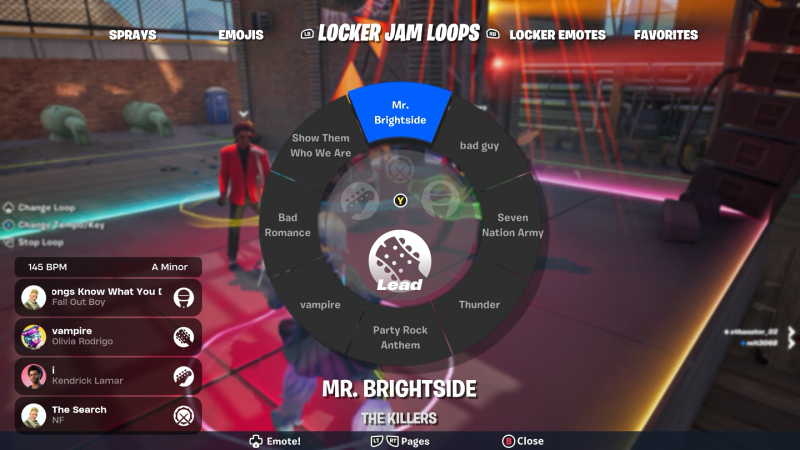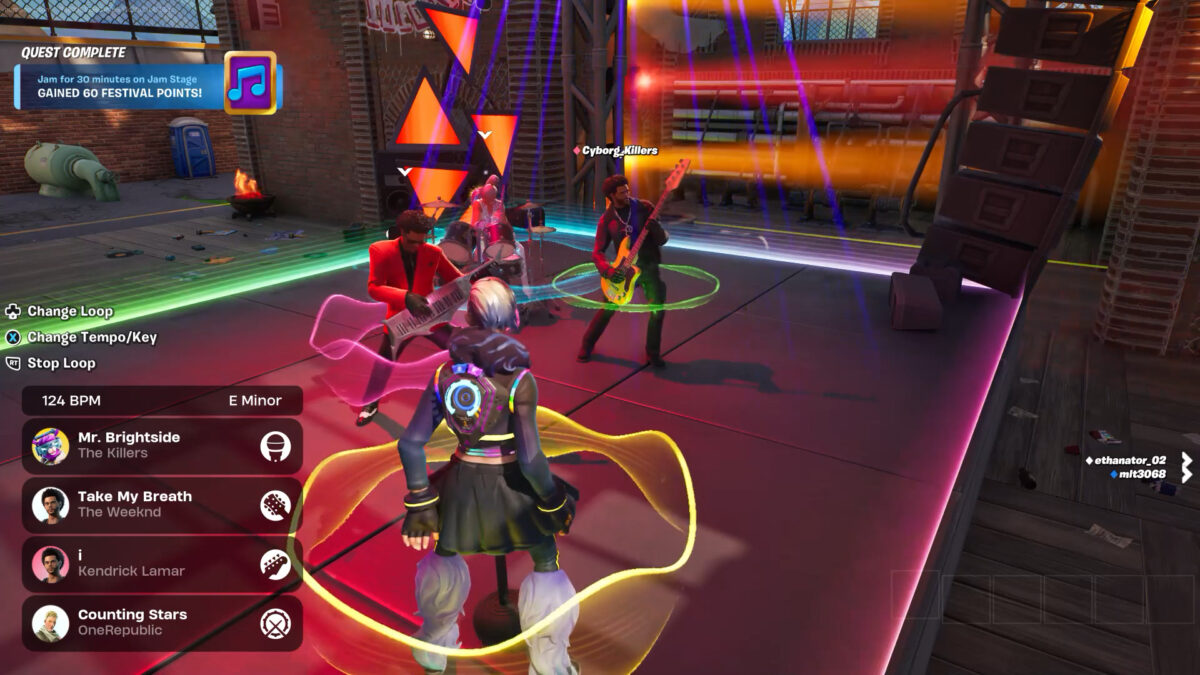Released December, 2023 in Fortnite by Harmonix / Epic Games
I joined Harmonix only a few months before the studio was acquired by Epic Games in late 2021. As part of Epic, our goal was to bring greater musical expression to the world of Fortnite, with a focus on playful, collaborative social experiences. No guns; only grooves.
From January through September of 2023, I was incredibly proud to be the Design Lead and Product Owner of the Jam System, a unique feature that embedded casual, collaborative music-making into Fortnite’s popular emote system, and allowed players to effortlessly create multiplayer mashups in many places across the Fortnite “metaverse,” including Battle Royale.
Harmonix has made multiple attempts through the years to embed the magic of mashups into a gameplay experience—first with the card game Dropmix in 2017, and later with the DJ simulator Fuser in 2020. Those games are beloved by their devoted fanbases, but neither has the sheer scale of something like Fortnite. With Jam, we had an opportunity to put Harmonix’s incredible mashup technology in front of a massive audience, and see just what sort of mashup mischief they could come up with.
The Jam System is predicated on players purchasing or unlocking songs for use in Fortnite Festival. Each song acquired comes with “jam loops,” which break the track into four 32-bar loops: Bass, Drums, Lead, and Vocals.

By using the emote wheel, players can select a song and a part (like the bass from Seven Nation Army, or the vocals from Blinding Lights), and their character will bust out the appropriate instrument and start jamming. Up to three other players can join in with their own songs and parts, and the Jam System will sync up the tempo and key for all parts, allowing for even the most cursed mashups to sound better than you’d expect. Players can switch between songs seamlessly, and even tweak the tempo and key as they play to keep the jam fresh.
Where Jam System departs from previous attempts at mashup gameplay is in both the social element, and the lack of game rules dictating the experience.
Each player in a jam session can only play one part at a time, so full four-part mashups require finding other players to jam with. And something truly magical occurs when you get into the groove with three total strangers. Even early playtests had an electricity to them, and our sessions often had me cackling with joy when we’d nail the perfect on-beat transition, or switch back and forth between vocal tracks to create impossible duets. We didn’t have to be in the same room to share that collaborative energy, and the connection between us felt genuine, even if we were communicating through nothing more than loop changes.
Jam is also unique in that it doesn’t try to be a game. There are no points (other than XP earned), and no system dictating what “good” or “bad” play looks like. The incentives for jamming are almost entirely intrinsic. The implicit goal of Jam is to jam well, and create a positive experience for yourself, your fellow jammers, and whoever else is dancing along.
Those who know me, know how much I love mashups. Working for Harmonix had been a dream of mine for as long as I wanted to make games, and I love that a large part of my time with the company was spent helping bring mashups to the masses, and empowering new kinds of social, musical play.
